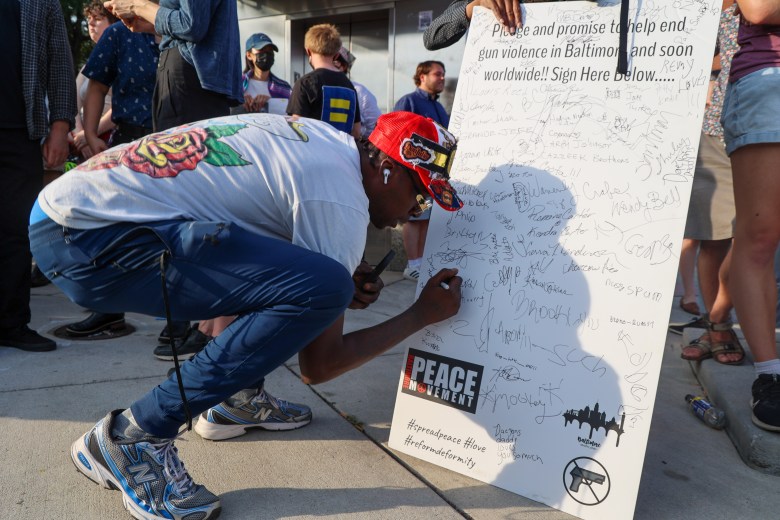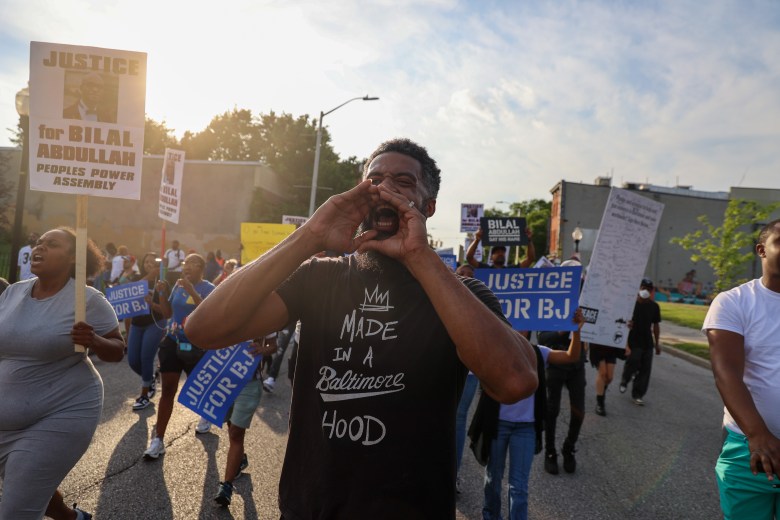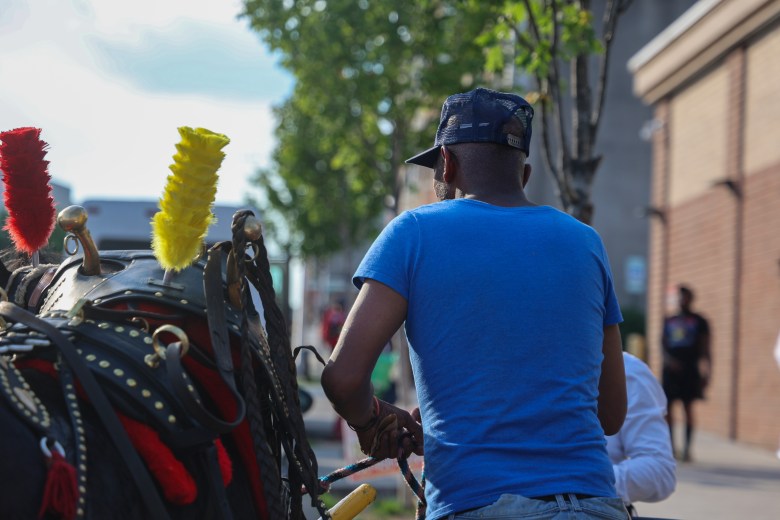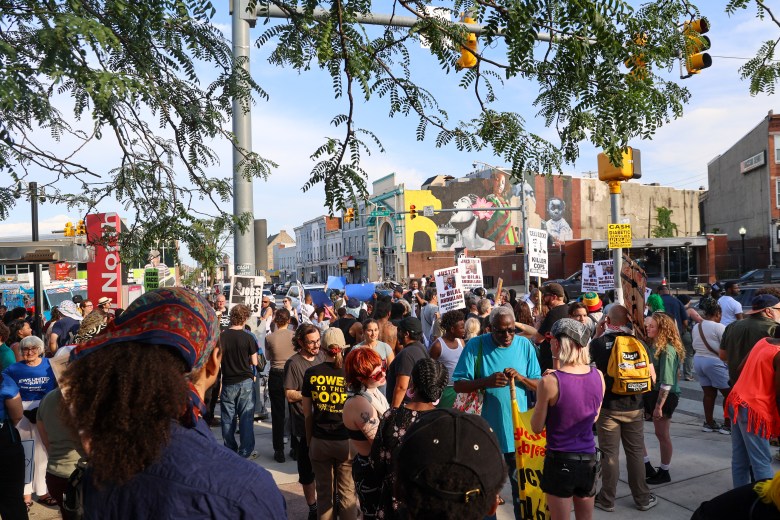Hundreds of people marched through west Baltimore Friday evening to remember Bilal “BJ” Abdullah, a beloved arabber who was fatally shot by Baltimore police on Tuesday. The crowd, a mix of children, teenagers on scooters, dirtbike riders, elders, and men on horseback, reflected just how widely Abdullah was loved and respected.
As the march proceeded down Pennsylvania Avenue toward the Upton Metro Station, where the shooting took place, more people joined in. Families peered out their doorways to take videos and chant along with the crowd, who shouted “Justice for BJ,” and “no justice, no peace!”
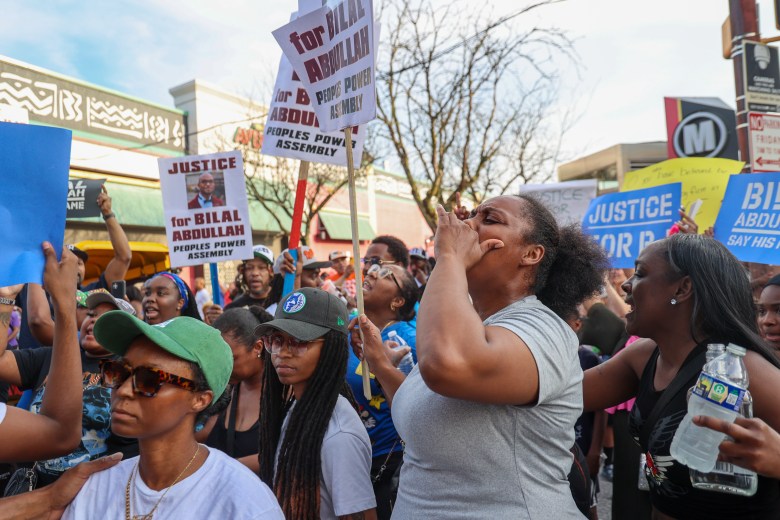
Abdullah’s sister, Najla Abdullah, told the marchers that the sunny weather was a sign: “There’s no rain today because my brother was welcomed into those heavenly gates,” she said, her voice cracking.
“Justice for the fruit man!”
The march was an outpouring of love for Abdullah, who spent much of his life selling produce from a colorful horse-drawn wagon in neighborhoods where fresh food is often hard to come by. Tony Mack, a fellow arabber who worked with Abdullah, said the killing was a “travesty.”
“A good arabber. A good guy,” he said of Abdullah. Mack’s horse, Michelle, led the march Friday with a bright red feather plume on her head and bells on her harness in typical arabber fashion.
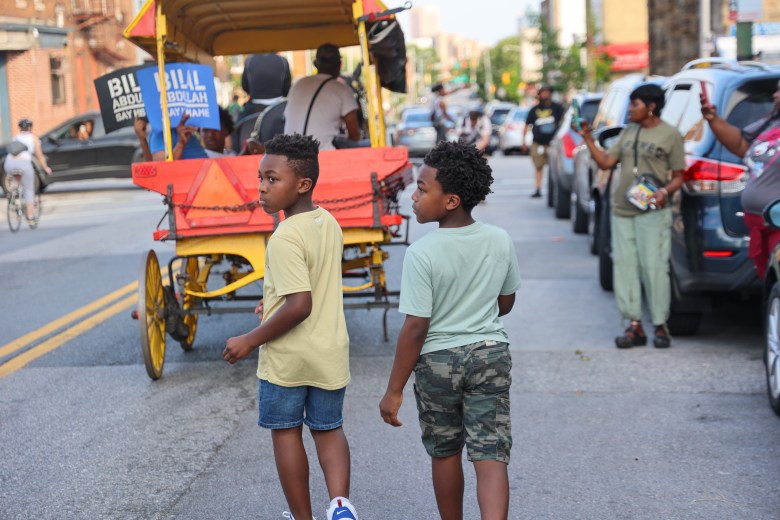
Members of the Baltimore Police Department were a constant presence around the march. Police vehicles drove ahead and behind the crowd to block off the street to traffic and then hung around while members of Abdullah’s family addressed the group at the end of the march. At one point, it appeared that nine police vehicles were sitting in the street on either side of the protest.
When Abdullah’s mother spoke to the crowd, her voice was drowned out at one point by a Baltimore Police Department “Foxtrot” helicopter, which circled overhead several times.
“I want everybody to remember that he didn’t deserve what happened to him,” said Abdullah’s mother, Joy Alston.
“Something they can’t take away from me is his love, his spirit, and what he did throughout the community,” she said, “and I want everybody to remember that.”
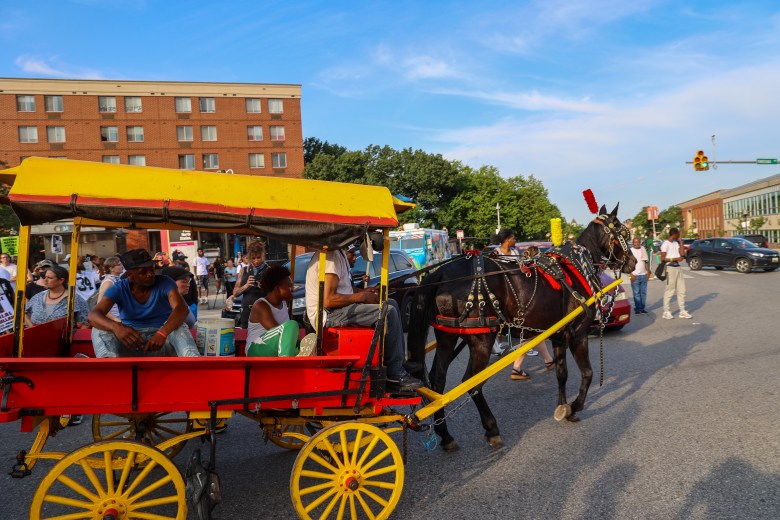
Many members of the crowd called for accountability for the Baltimore police officers who shot Abdullah. The Maryland Attorney General’s Office, which investigates police shootings, identified the officers involved as Detective Devin Yancy, Detective Omar Rodriguez, and Officer Ashley Negron.
The Attorney General’s office said Wednesday that a preliminary investigation showed Baltimore Police officers encountered a man wearing a crossbody bag in the area of Pennsylvania Avenue and Laurens Street at about 7:15 p.m. Tuesday evening. The officers attempted to speak to the man from their unmarked cruiser, according to the Attorney General’s Office, and then one officer approached the man on foot.
The man began walking away and shifted his bag from the back of his body to the front as an officer followed, the AG’s office said. As the officer grabbed the man, “a firearm was discharged,” the office said, and the police officers took cover. Two other officers had exited their vehicles to assist, the office said. The preliminary investigation said the man pointed a firearm at the officers, and the three officers “exchanged gunfire” with the man, striking him.
“A firearm was recovered from the man and secured by an officer,” the office said in its press release. One officer was shot in the foot and received medical treatment.
A crowd of people gathered near the scene after the shooting, distressed by Abdullah’s death. Police Commissioner Richard Worley blamed the community for blocking medical aid to Abdullah after the shooting, saying Tuesday that “the crowd actually interfered with our ability to give the victim aid.”
New reporting from the Beat has raised questions about that narrative. Alston says police physically restrained her and injured her shoulder when she tried to get to her wounded son Tuesday evening; officers also threatened to arrest Alston’s daughter when she told the police to back off.
Several marchers questioned the amount of force that police used and the length of time it took to get Abdullah medical care.
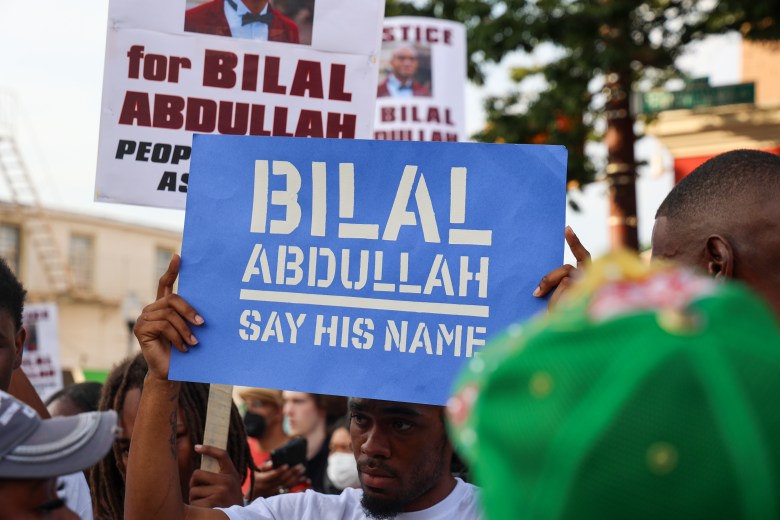
“The police officer arrived at the hospital before the victim,” said A. Zigler, who rode a horse named Smoke that BJ used to ride at Friday’s march. Like Abdullah, Zigler also grew up around horses in the stable.
“This is my brother,” Zigler said. “What’s right is what’s right and what’s wrong is what’s wrong, and that’s what I’m standing on.”
At the end of the march, the crowd gathered around Abdullah’s family and offered Muslim and Christian prayers. Aaron Maybin, the chair of Baltimore’s Civilian Review Board, said that the love shown for Abdullah through Friday’s march demonstrated the kind of person he was.
“This right here is the sum of this man’s life,” he said, gesturing to the crowd.
